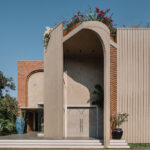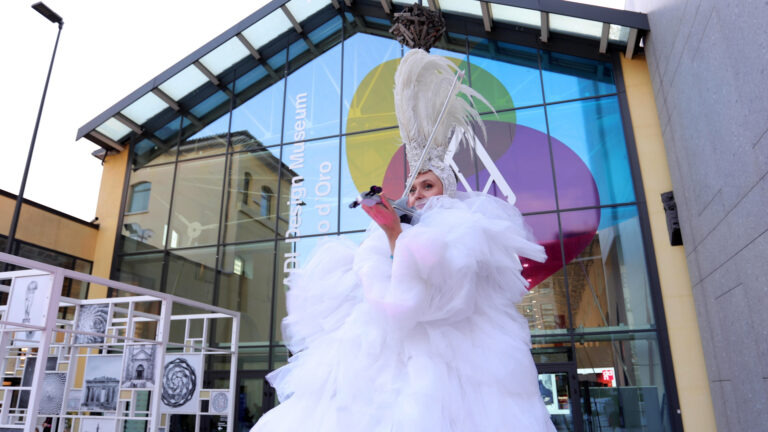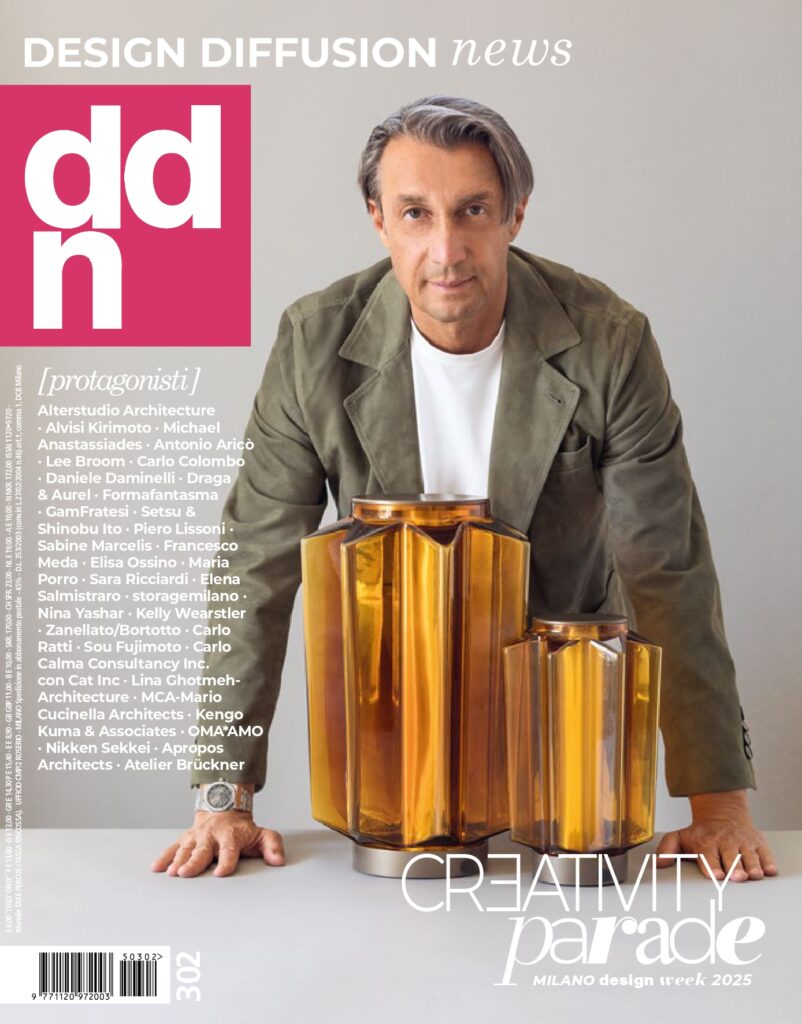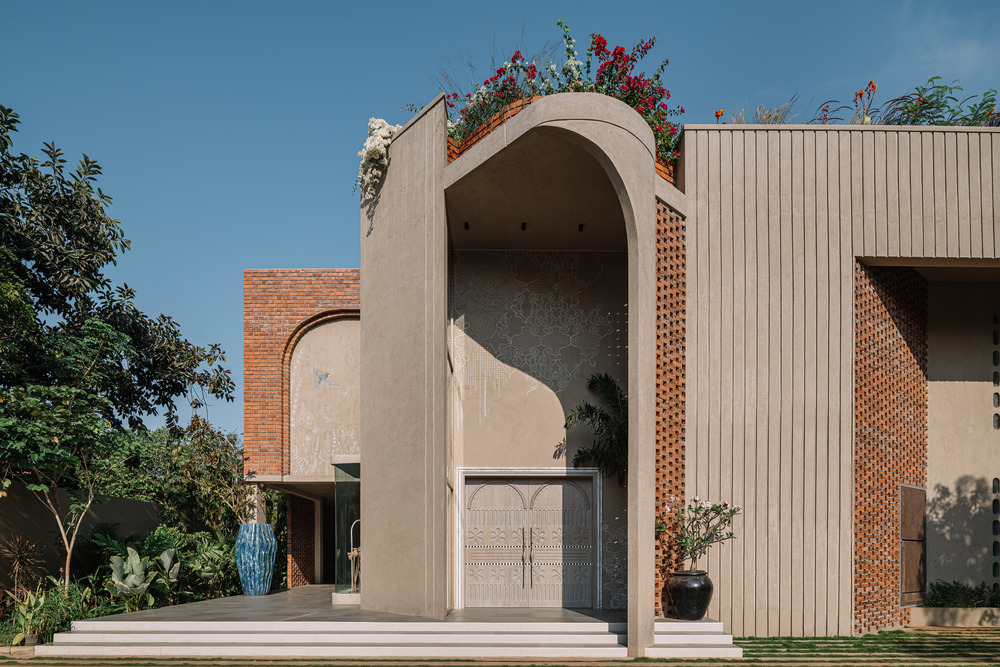“Le caffettiere dei Maestri. Quando l’architettura e il design incontrano la Moka” is the title of the exhibition that the Lavazza store on Piazza San Fedele 2, Milan, dedicates to coffeemakers designed by architecture masters. Twenty-four coffee makers illustrate different interpretations of the traditional moka, the steam pressure coffee maker invented in the first half of the 20 century.
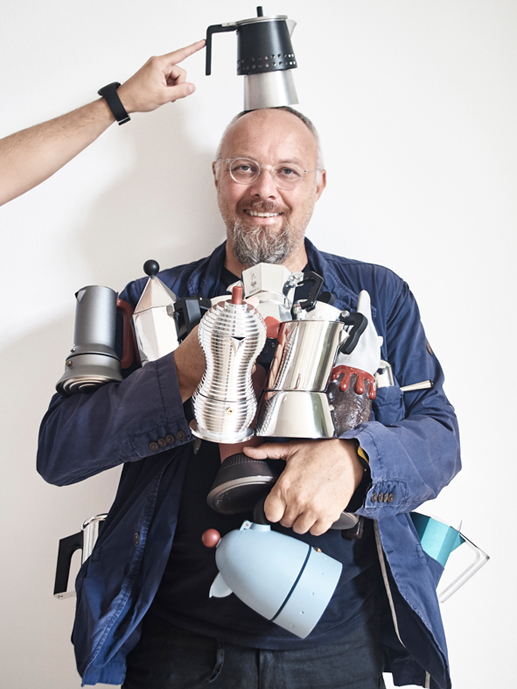
The moka as an object of desire
The coffee maker is not just an object or a machine: it’s architecture. Every great architect has tried to design one; they aspire to build a a coffeemaker just in the same way as they would like to design a tower before dying.” (Alessandro Mendini) This is how, using Mendini’s words, Giulio Iacchetti, curator of the exhibition, starts describing the inspiration for the exhibition on moka designed by great architects.
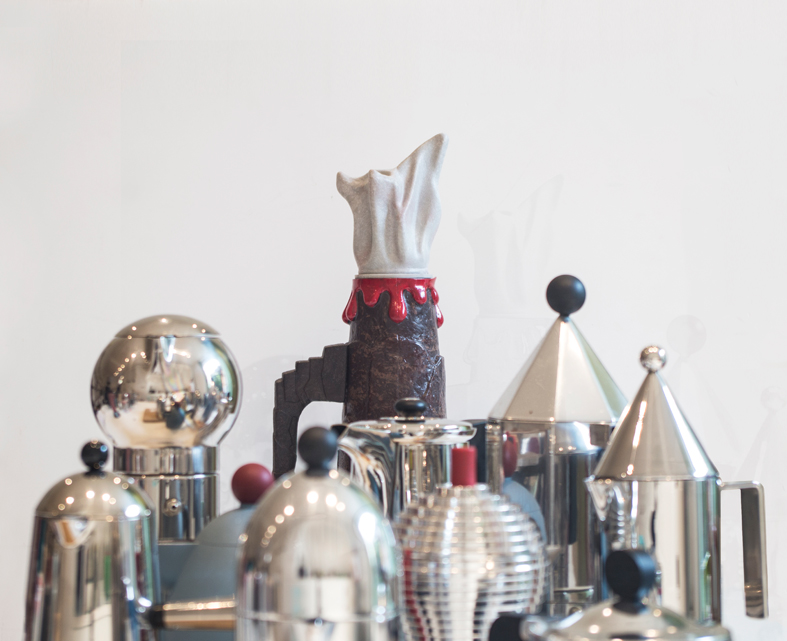
“I have identified 1979 as the turning point in the design of the coffee makers. That year was marked by two remarkable events: Marco Zanuso’s Carmencita moka, inspired by the advertisement for Lavazza Paulista coffee, and Richard Sapper’s 9090 coffee maker for Alessi. Both are still in production and have been milestones in the history of moka. Following them, many Masters tried their hand at designing a moka, from Aldo Rossi, to Ettore Sottsass, Gaetano Pesce, Michael Graves, Michele De Lucchi, Angelo Mangiarotti, Guido Venturini, Stefano Giovannoni, Cini Boeri (with the Opera moka pot for La Pavoni), or, more recently, Tom Dixon, and many others.”
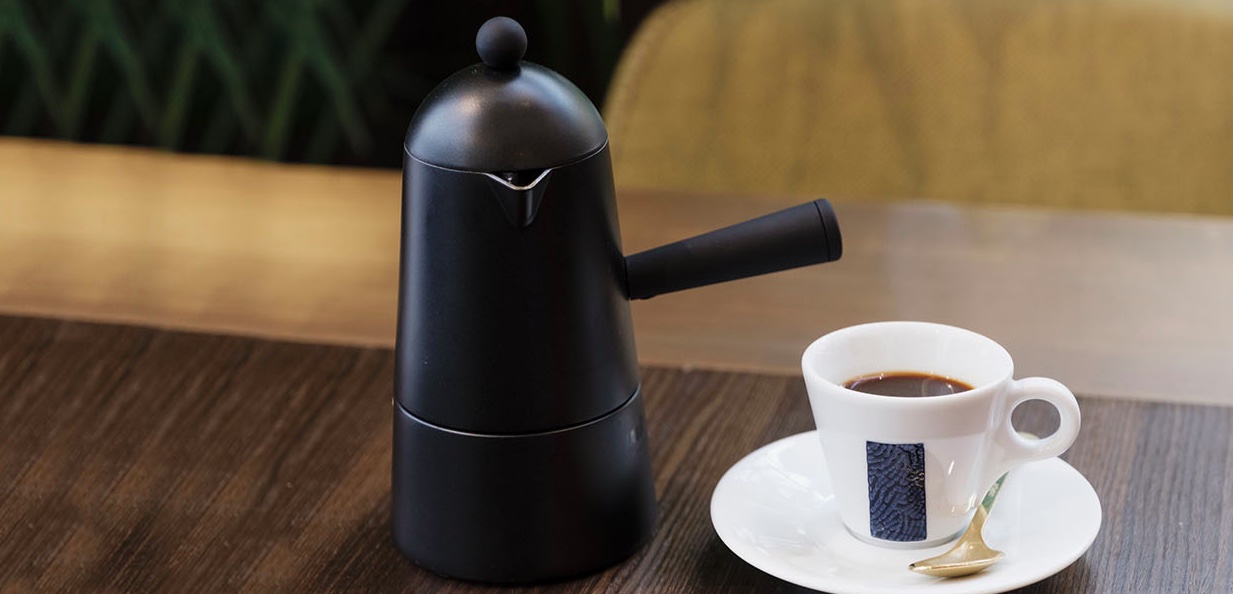
Why is it so interesting to design a steam pressure coffee maker?
“For different reasons, actually. Coffee is not just a drink, there is a ritual that takes place every time you make coffee with a moka: this way, the coffeemaker becomes an archetypal symbol, the representation of a ritual. Actually, from a technical point of view, the steam pressure coffee maker is not a complex object, as the Bialetti coffeemaker set a standard, and today’s coffeemakers are usually different versions of that design.
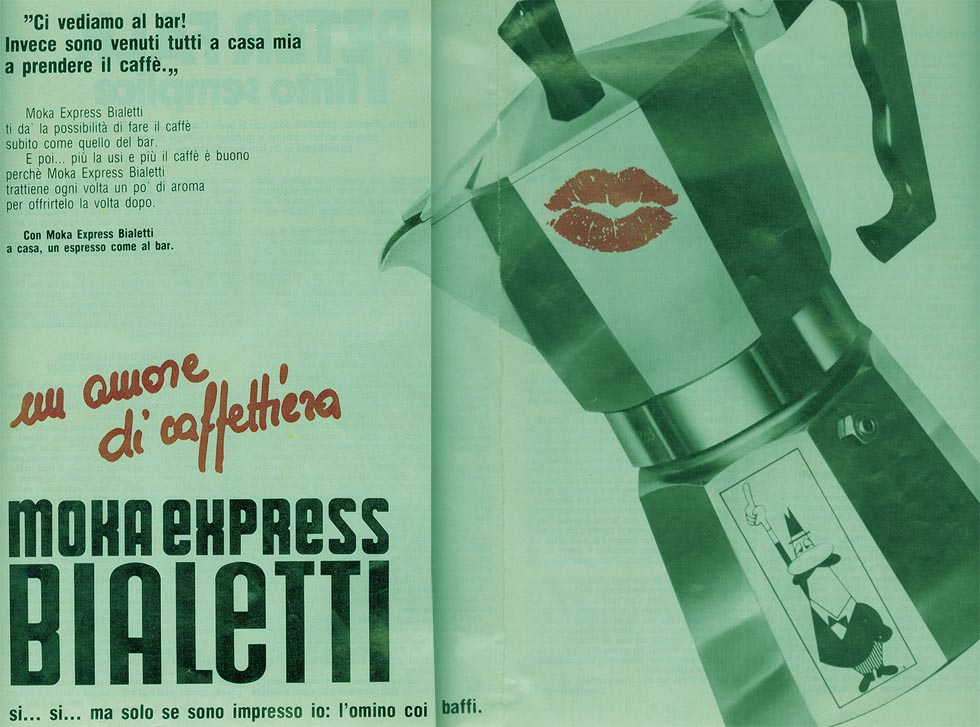
The coffeemakers by architects
This exhibition is dedicated to all the different versions of the coffeemakers created by architects and designers, for which Giulio Iacchetti has identified three currents.
“One is represented by what I call ‘polygon syndrome’, which includes multi-faceted moka, inspired by Bialetti.
Another interesting trend is the large family of ‘mirror’ moka: it includes the ones that overtly reflect their author’s design style, such as ‘La Pina’ by Piero Lissoni for Alessi, a pure volume, or the moka designed by Angelo Mangiarotti for Mepra, which expresses his whole design philosophy.
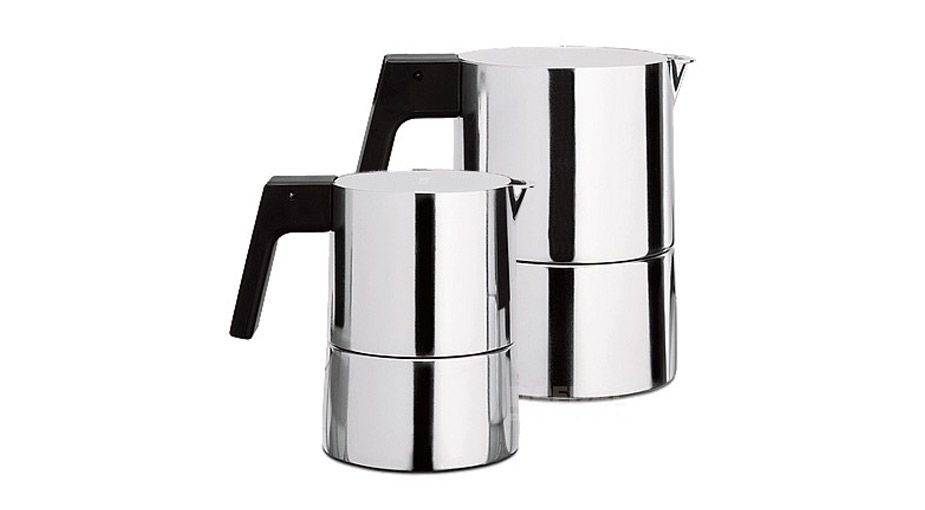
The third trend is represented by the ‘young Masters’, including coffee makers by young designers. Here there are the Lunika 360 moka, by Francesco Fusillo, the moka of the Collar series, by Daniel Debiasi and Federico Sandri for Stelton, and the Lady Anne moka, by Lara Caffi for Knindustrie, a contemporary coffee maker that reinterprets the silver coffee pots from the past, with decorative elements inspired by the 18th century.”
Is there a ‘perfect coffee pot’?
“Talking of a perfect coffeemaker is probably too much. We can say that the Bialetti moka represents a very good standard and that its success is well deserved. However, the success of the Bialetti icon is due to many reasons – not only to its excellent design. We only need to think that the moka was invented in 1932, but it was patented in 1950s, and its commercial success began in the Sixties. An authentic example of democratic design, which has become so popular thanks to a series of events and the determination of those who designed, produced and finally marketed it.
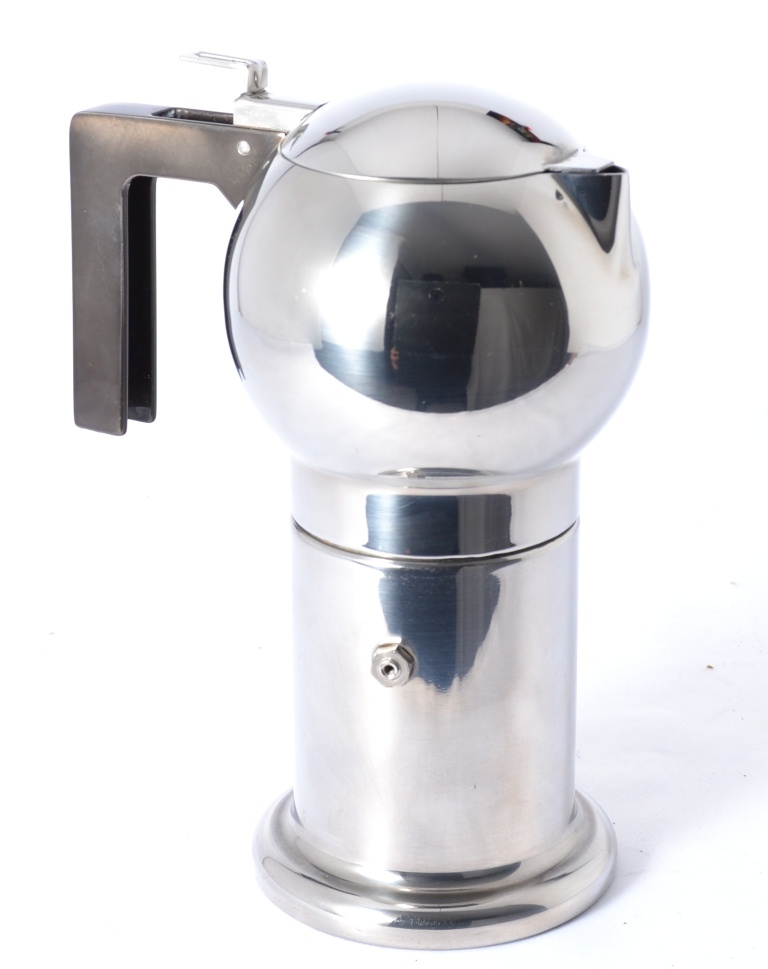
But the truth is that there are various schools of thought, especially with regard to materials, therefore each designer can express their own “coffee philosophy.”
So did Gaetano Pesce with “Vesuvio“, a massive moka but not very functional, Ettore Sottsass with “Lazaniezani“, very elegant and very functional, so Tom Dixon, with his copper coffee maker, a material that the English designer loves very much. And so many others, even others that are not included in this exhibition.
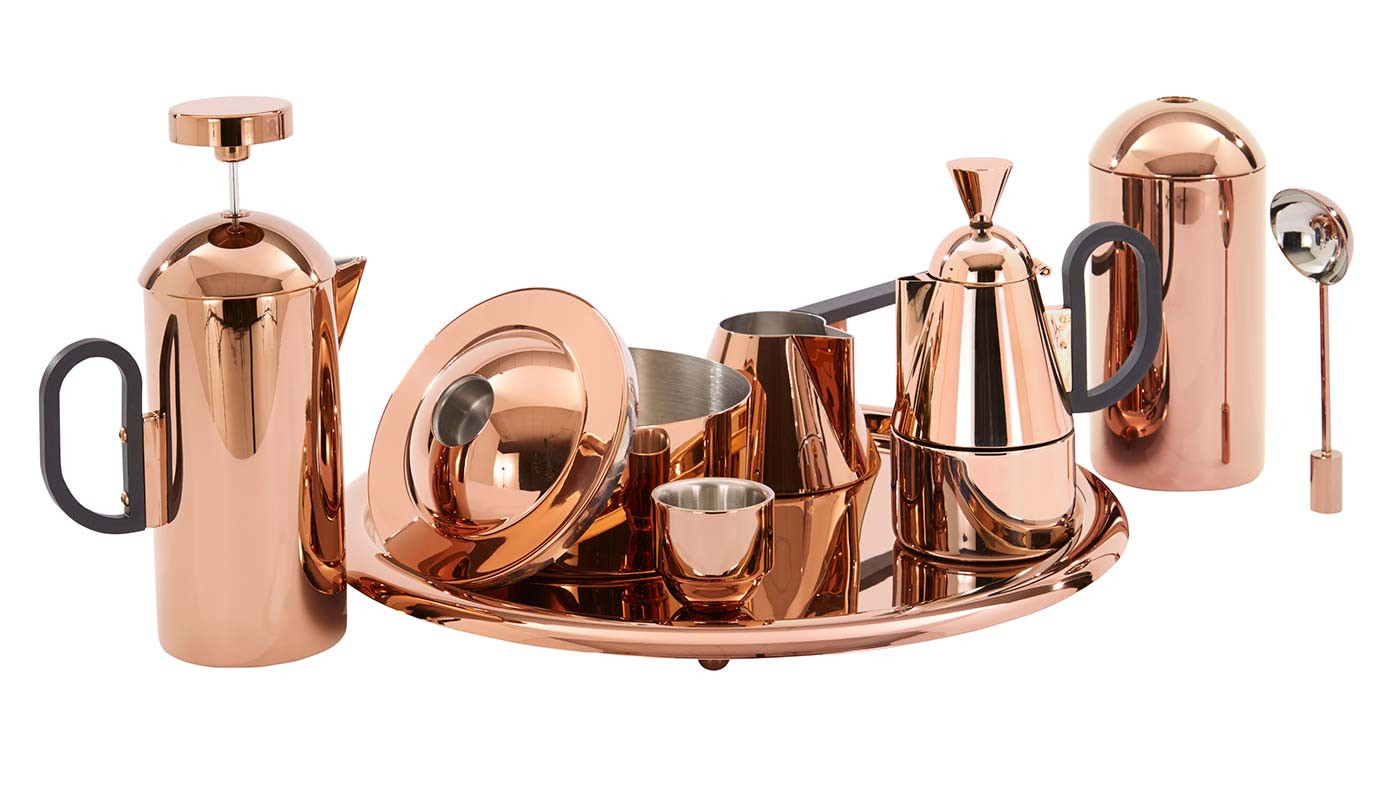
“Le caffettiere dei Maestri. Quando l’architettura e il design incontrano la Moka”, curated by Giulio Iacchetti
Lavazza Flagship Store, Piazza San Fedele 2, Milano
October 1st-November 3rd
h. 08:00 – 20:00



